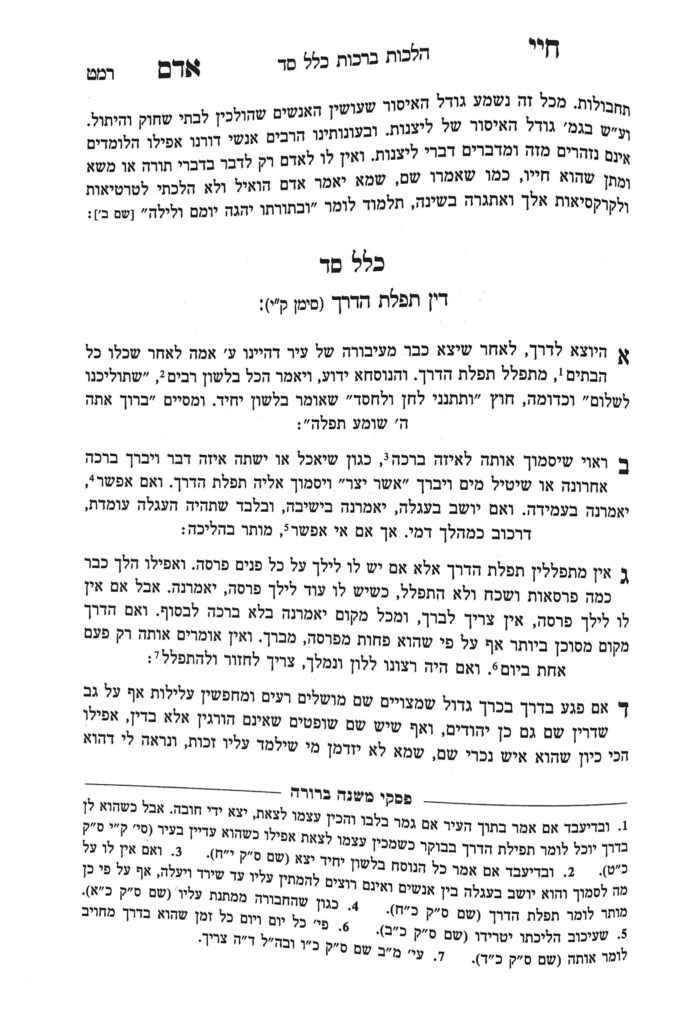We have finished siman 2 and have a point to clarify. We learned about the concept of rachuv k’mehalech dami, riding on something in motion is considered halachically equivalent to being in motion oneself. We learned that the Gemara applies this concept to a talmid chochom riding on an animal to require a person to stand up when they pass by.
The poskim discuss that a talmid chochom riding in a car is different, and one does not need to stand up if they see a talmid chochom in a moving car. A car is large enough to be considered a different reshus (domain), so there is no obligation to stand up.
In siman 3, the Chayei Adam writes that the minimum distance one must travel in order to be obligated in tefillas haderech is one parsah. This is based on the Gemara which states that one is obligated to recte tefillas haderech if they travel a parsah. This distance remains nowadays as well. A parsah is 4 mil, and a mil is 2000 amos, so a parsah is 8000 amos. There is a machlokes regarding the size of an amah. Rav Chaim Noeh held an amah is 1.5 feet, and the Chazon Ish held it is closer to two feet, so a parsah is either about 2.25 miles or a little over 3 miles. Thus, even if a person is planning to travel just a few miles outside the city limits to an area which is not inhabited, they would recite tefillas haderech.
Rashi holds that when the Gemara states that one recites tefillas haderech when they travel a parsah, the Gemara means that one must recite tefillas haderech within the first parsah of travel. Therefore, we have learned that one should try to say tefillas haderech as soon as possible after their travel has begun, in order to fulfil Rashi’s opinion (shiur 1232). However, it may not always be feasible to fulfil Rashi’s opinion, as sometimes a city is built up for more than a parsah from where one begins their journey, and we have learned that one does not recite tefillas haderech until they are fully outside of the inhabited area, which will cause one to wait to say tefillas haderech due to his safek until he is sure that he is beyond the end of the city, but meanwhile, he may have truly left the area prior, and by now is past the first parsah (shiur 1232).
If a person does not recite tefillas haderech within the first parsah of travel, as long as there is at least one parsah of travel left, one may still recite it. If they are within a parsah of their destination, they should recite the tefillah without a bracha.
Summary
- The chiyuv to stand up for a talmid chochom in motion does not apply to a talmid chochom traveling in a car.
- One must be traveling a minimum distance of a parsah (3 miles) outside the inhabited area of a city in order to recite tefillas haderech.
- Additionally, one should try to recite tefillas haderech within the first parsah of their journey, if it is feasible to do so.
- If one forgot to say earlier in the journey, one may tefillas haderech until the last parsah with a bracha.
- If one is already within one parsah of their destination, one says tefillas haderech without the chasima.



